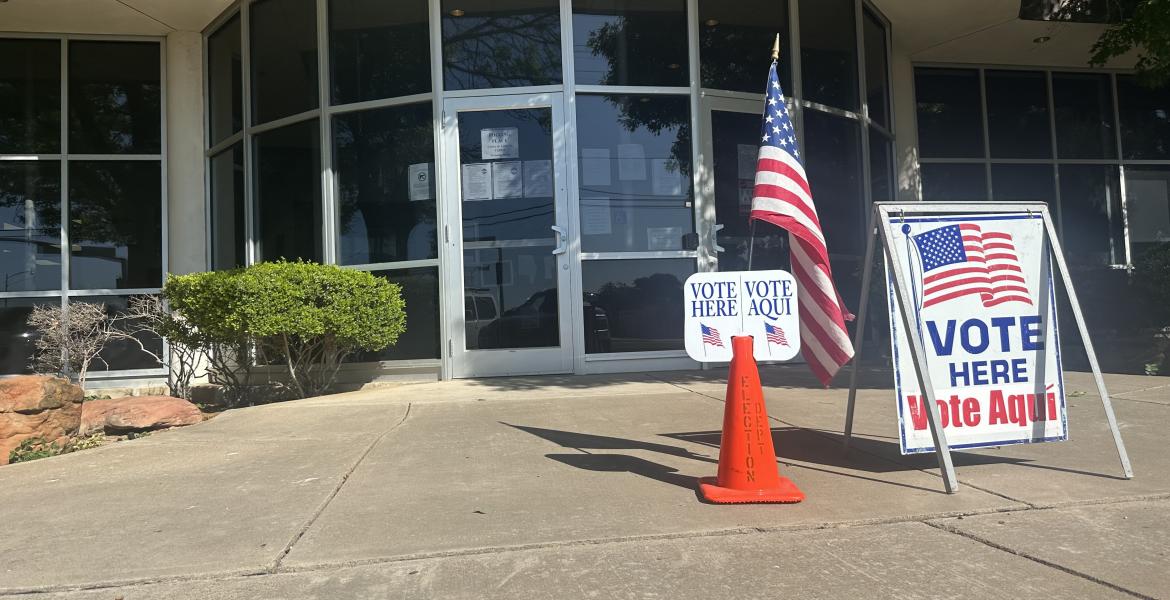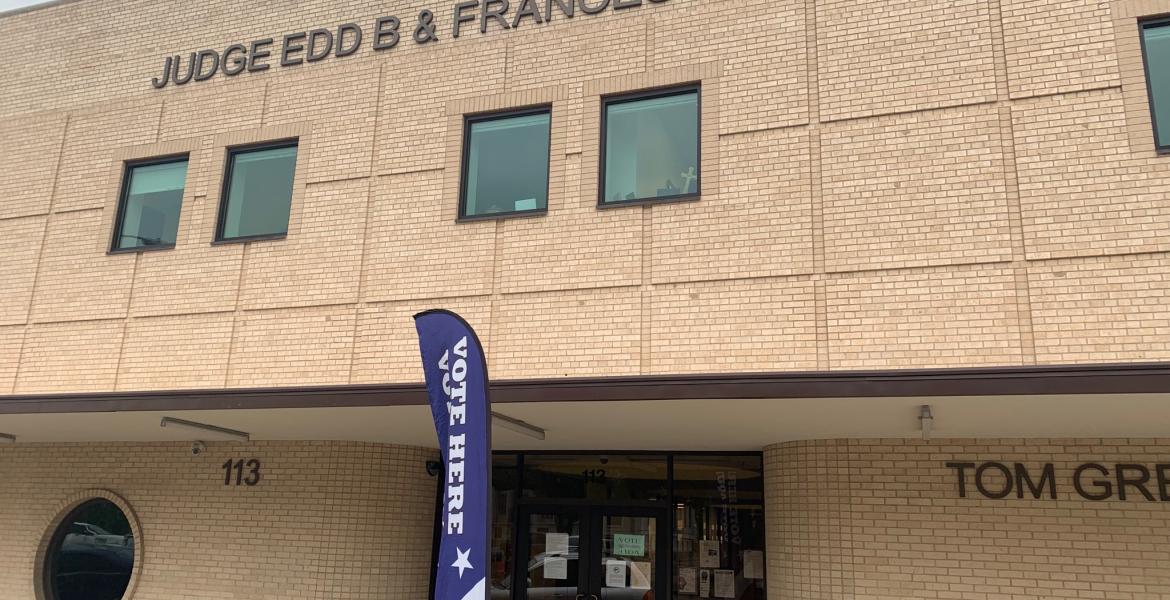‘When Disneyland opened in 1955, they tried to envision a futuristic society, which they called Tomorrowland. It looked a bit like the ‘70s, with formica, molded panels, and in those days, very futuristic stuff,’ Dr. Peter Bishop said at the San Angelo Museum of Fine Arts Thursday.
‘Approximately five years ago, they tried to redesign Tomorrowland,’ Bishop says. ‘They failed. It didn’t look any different.’
Dr Bishop was invited to speak at the Museum on “Designing for the Future,” the first presentation in a series of four as a part of SAMFA’s Visions and Choices series. The core of the program is San Angelo’s own future, with an emphasis on planning and education for this and following generations.
Tomorrowland failed for a reason, that reason being that the future looks much the same as today, Bishop says.
The reason for that? Simply put, all of the ‘big’ things have already been done. The emphasis here, however is not on the conceptually ‘big’, but on the literally big physical objects.
“What was changing us before was the macro structures of our world. Petroleum,” Bishop says, mentioning the catalyst of the last century of innovation. “So we have everything from Cessna airplanes to the satellite rockets, all based on the same kind of energy. We have freeways, we have automobiles, we have airplanes, we have mobility that we never had before.”
Bishop explained that innovation tends to go in cycles. When petroleum was the engine behind innovation in our society, it took us places. The future was drawn up with images of bronze and copper rocket ships, discovery of outer lands and space shuttles, much like the designs depicted in Disney’s Tomorrowland.
But, “Oil is not contributing any longer to new productivity,” Bishop says. Ingenuity is no longer associated with imagery of space ships and airplanes.
“Have we stopped designing the future?” Bishop asks. “No. What’s happened is that the…technology developments now are mostly invisible,” he said. “We’re going from the macro to the micro.” We don’t see the design features of things we’re developing.
If oil is the innovation of the past, then the internet and digital technology are the innovations of the present and near future. Advances are being made at an exponential rate, and capabilities are vastly expanding to new and more visually challenging arenas.
Smart grids and smart cities are being designed and machine to machine communication is becoming a reality. Someday, city streets will contain sensors that communicate with one another. Should one street be blocked off due to traffic, another route will be made available, and this all over the internet. You may receive a notification on your smartphone to take an alternate route to work that morning, or be woken up earlier to accommodate for time lost. The information will flow from machine to machine, device to device, without requiring human interaction. This is the type of future we are now designing for, says Bishop
“I think that a lot of what we will be designing is sensations,” Bishop says. “The amount of data created by machines will be way more than the amount of data created by people. Machines will use that to talk to each other to create our world.
“Well that’s very hard to visualize. A machine that’s sensing looks exactly like a machine that’s not sensing….The impression of the future that I think of is,” Bishop gestures as if attempting to open a door, “’Oh! I didn’t know it was going to do that,’” he says, mimicking an unexpected reaction. “The house, the office, the toaster, the automobile,” Bishop continues. All of these things will have their own functions with sensors built in.
In light of the direction technology is headed, Bishop suggests that the people who are going to be successful will be those that partner with their machines. There are certain things machines do better, Bishop says, such as calculation, formulas, processing information, etc.
“What we should be learning, therefore is how to identify problems, which tools to use, how to communicate, how to work with others; those really fuzzy kind of things that people call soft skills,” Bishop says. “The problem goes back to education. We’re not teaching people those.”
Education was a running theme throughout Bishop’s presentation, and one mirrored in the objectives of the Visions and Choices program. While presenting, Bishop made frequent reference to the way in which skills have been viewed in the past, as opposed to how they are viewed today.
A simple comparison was made by mention of photography. In the past, a photographer was someone with a technical skill for operating a camera, use of light and shadows, and a keen understanding of contrast and color. More recently, the trade of photography has extended to the ability to edit photos using software such as Photoshop, which takes a certain extent of know-how.
Nowadays, “everyone’s a photographer with their iPhones and things,” Bishop explains. There are apps that do the editing for you, enabling even the most basic user to create great photos. This extends to virtually all facets of media, such as video and blogging, where the production field has been opened up to anyone who has a media-capable device, and the professional field is a lot more competitive and high-end than in the past.
Bishop, as well as many members of the audience, agreed that formerly such things were often best left to experts. One did not consider how to go about editing his own photos, he hired a photographer. By contrast, today anyone can produce a similar product, although experts do have their place.
This placement of the media in the hands of the public has been referred to as “democratizing media,” and by the same token Bishop suggests that design may be democratized as well.
Physical examples would include the use of 3D printers to personalize and design one’s own unique (anything) items. Intangible examples would extend to app and web development, software and machine technology and computer-assisted programming.
The video below is a basic description of how 3D priting works.
[[{"fid":"668","view_mode":"default","fields":{"format":"default"},"type":"media","attributes":{}}]]
What’s important, Bishop says, is to encourage children and the younger generations to use their skills to design for the future. To enable youth to take advantage of the technology available and to use it to push the boundaries of what has been traditionally expected of them.
This is the job of the parents, grandparents and educators of the world today. It's society's job to ensure innovation isn't stifled but fostered, and that children, who grow up with the technology, are encouraged to push its limits and discover new things.
Bishop says: “My vision for our field is that we teach our children as much about the future as we do about the past.”
Dr. Peter Bishop is a University of Houston College of Technology Associate Professor. As a futurist, he is currently teaching a high school class in Houston on future studies that will present their findings to the Houston City Council and other decision-making organizations at the end of the school year.
Dr. Bishop is the first of four presenters invited to speak at the San Angelo Museum of Fine Arts Visions and Choices series over the next three weeks. Information on upcoming presentations will be posted on our website as it is received.
Subscribe to the LIVE! Daily
Required






Comments
Listed By: Aarika Thixton
- Log in or register to post comments
PermalinkPost a comment to this article here: